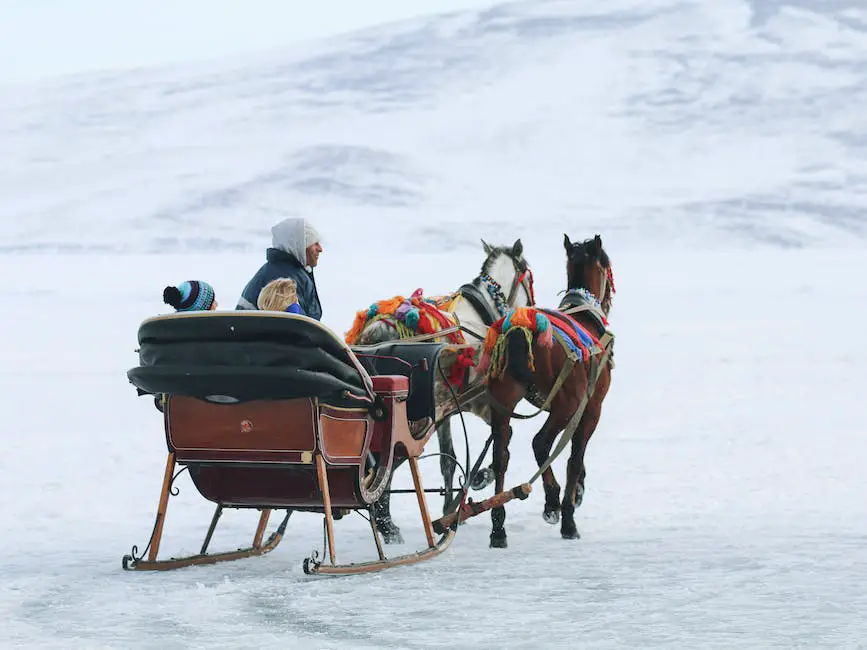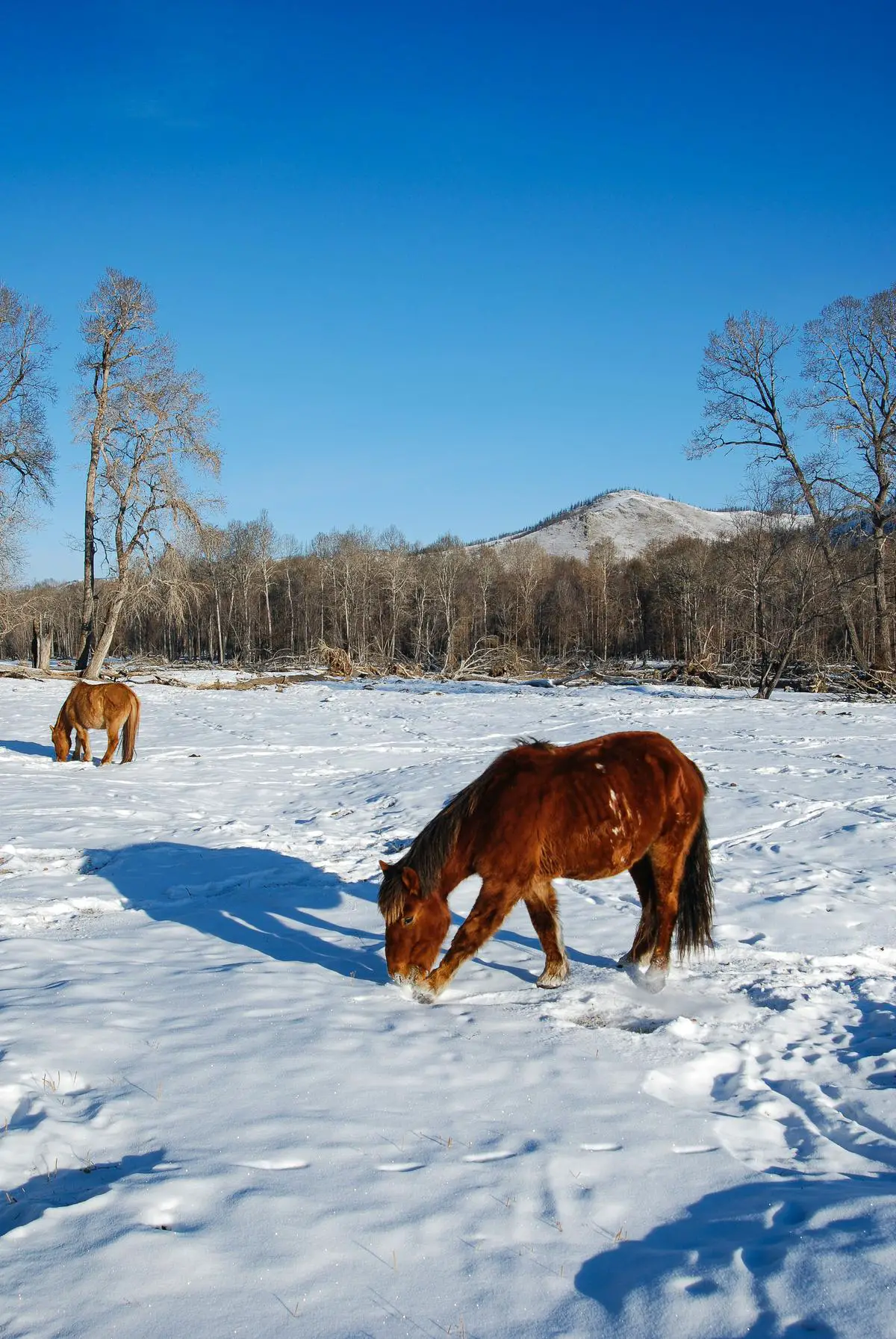When we speak of ‘cold blooded’ horses, a flicker of confusion often ignites in the hearts of equine enthusiasts and hobbyists alike. This term, laden with misconceptions, suggests a world where some horses are immune to the chill of the wind or the warmth of the sun. Unraveling the complex tapestry of equine thermoregulation, this essay dispels the chilling myths surrounding so-called ‘cold blooded’ horses and warms up the reality of their physiological prowess. We embark on a scientific journey to understand not only the inner workings of equine temperature control but also the fascinating origins and misapplications of the ‘cold blooded’ moniker that have perplexed horse caretakers for generations.
Table of Contents (Horspedia)
Understanding Thermoregulation in Equines
Unveiling the Intricacies of Equine Thermoregulation
The homeostatic marvel of thermoregulation in equines is a testament to the evolutionary refinement endemic to these resilient creatures. Horses, as an exemplar of the species, have honed a multifaceted system for maintaining optimal body temperature despite the vicissitudes of their environment. This article endeavors to elucidate the physiological mechanisms horses employ to regulate their internal temperatures and dispel prevalent misconceptions surrounding their thermal adaptability.
Foremost, the integumentary system, which comprises the skin and associated appendages, plays a pivotal role in equine thermoregulation. Sweating is the primary avenue of heat dissipation in horses. Through an extensive network of sweat glands, much larger and more numerous than in humans, horses exude sweat over a prodigious surface area, facilitating evaporative cooling. Yet, this process is not as effective in high-humidity conditions, leading to a common misconception that horses overheat solely due to exertion. In reality, ambient humidity levels greatly influence thermoregulatory efficiency.
The equine coat also possesses remarkable thermoregulatory properties. Seasonal changes induce alterations in coat density and length; a heavy winter coat provides insulation, whereas a short summer coat enhances heat loss. Vasomodulation beneath the skin further exemplifies the horse’s adaptive capability. In the cold, blood vessels constrict (vasoconstriction) to reduce blood flow to the skin and conserve core body heat. Conversely, in high temperatures, vasodilation permits increased blood flow to the skin’s surface, expediting heat release.
Respiration serves as an auxiliary mechanism for thermoregulation. Rapid, shallow breathing, or ‘blowing,’ allows horses to expel warm air and inhale cooler ambient air, thus leveraging the respiratory system as a cooling apparatus. This mechanism operates in tandem with the aforementioned systems to stabilize body temperature, a fact that is often overshadowed by the more visible sweating process.
Despite the robustness of these systems, they can be susceptible to environmental extremes. For example, the process of non-shivering thermogenesis, where metabolic heat is produced without muscle contractions, is thought to be less prominent in equines compared to other mammals, placing additional reliance on behavioral adaptations, such as seeking shelter or basking in the sun.
These behavioral strategies merit emphasis, as they represent the horse’s ability to actively partake in their own thermal regulation. By selecting shade, wind exposure, water for wallowing, or sun for basking, equines demonstrate an intrinsic understanding of their thermal needs.
The combination of physiological and behavioral mechanisms comprises the equine thermoregulation strategy. Such a system showcases not only the adaptability of these mammals but also the intricate balance between anatomy and environment. Recognizing the nuances of equine thermoregulatory mechanisms is crucial for effective equine care and management. While common perceptions often simplify these mechanisms, the true complexity warrants appreciation and respect for these remarkable and adaptable animals.

Photo by gregory_brainard on Unsplash
The Myth of ‘Cold Blooded’ Horses
The term ‘cold blooded’ often conjures images of reptiles and amphibians, creatures that rely on environmental heat sources to regulate their body temperature. However, in the case of horses, ‘cold blooded’ has a markedly different connotation that has little to do with thermoregulation. It is imperative that we clarify this misunderstanding to foster accurate knowledge in equine science.
Within equine communities, ‘cold blooded’ refers to a group of horse breeds that are typically larger and more placid than ‘hot blooded’ or ‘warm blooded’ horses. This classification does not pertain to their physiological heating and cooling processes, but rather describes their temperament and their historical purpose. Cold blooded horses, such as draft breeds like the Clydesdale and the Shire, have been bred for heavy work that requires calmness, strength, and endurance. They are generally more imperturbable and tolerant of carrying heavy loads, making them well-suited for labor-intensive tasks like plowing fields and pulling wagons.
It is crucial to distinguish this use of the term from its biological sense, which refers to an organism’s dependence on external heat sources to regulate body temperature. In stark contrast, horses are homeothermic, meaning they maintain a relatively constant body temperature despite fluctuations in environmental conditions, as elucidated through their complex physiological and behavioral mechanisms of thermoregulation.
The misapplication of ‘cold blooded’ to horses is a clear example of linguistic ambiguity crossing into the scientific realm. This can lead to confusion and misunderstandings. Such terminological precision is particularly vital in educational settings and among equestrians and veterinarians, ensuring that discussions around horse care and biology remain clear and based on accurate descriptors of horses’ physiological capabilities and needs.
In essence, when speaking of ‘cold blooded’ in relation to horses, we are delving into cultural heritage rather than physiological attributes. This legacy of equine classification reflects a rich tapestry of human-horse interactions spanning centuries, where the demands of work and environment shaped the development of different horse breeds with various capacities and temperaments. It is within this context that the term ‘cold blooded’ should be properly understood and applied.

Physiological and Behavioral Aspects of Adaptation
In the scientific study of equids, a fascinating subject is their capacity to adapt physiologically and behaviorally to diverse climatic conditions. Bridging the gap in understanding this adaptability also means correcting common misconceptions about their biology, particularly the misuse of the term “cold blooded.”
Unlike reptiles and other true ectothermic creatures that cannot internally regulate their body temperature, horses possess robust thermoregulatory systems. These allow them to maintain stable body temperatures across a variety of environmental conditions.
A crucial aspect of this process not previously discussed is dietary thermoregulation. Horses consume significant amounts of forage, which in cold weather can act as an internal furnace. The fermentation process in the cecum generates heat and plays an integral part in maintaining body warmth. During frigid periods, the equine diet is often increased to boost caloric intake, providing more energy for heat production.
Another intriguing aspect of equine adaptation is the development of seasonal acclimatization. As seasons change, horses gradually adjust to varying temperatures, showcasing a biological process known as “acclimitization.” For instance, with the approach of winter, horses gradually develop thicker coats that trap air and provide insulation. Come spring, they shed these heavier coats in favor of lighter ones that facilitate cooling.
Moreover, horses exhibit distinct behaviors to control their body temperature, such as seeking shade, standing in water, or aligning their bodies with the wind to cool down. In colder weather, they might stand close together or use natural windbreaks to shield themselves from the chill.
Moving to debunk the myth of horses being “cold blooded,” it is necessary to clarify the confusion stemming from an equestrian classification that refers to temperament and not physiological thermoregulation. In equestrian contexts, “cold blooded” denotes a group of gentle, larger horse breeds bred for heavy work, such as Clydesdales and Shires, apt for beginners due to their serene demeanor. “Hot blooded” horses, on the other hand, tend to be lighter, faster breeds with more energy and sensitivity, while “warm blooded” describes breeds that combine traits from both. None of these labels, however, have any relation to their ability or lack thereof to regulate body temperature.
When considering horse breeds, their physiological and behavioral adaptations are a product of both natural evolutionary processes and selective breeding by humans for specific climates and functions. Over centuries, horse breeds have been sculpted to thrive in their respective habitats and succeed at the tasks required of them.
Ultimately, recognizing the spectrum of equine thermoregulation abilities enhances our stewardship. Proper management practices, including dietary adjustments, sheltering, grooming, and strategic exercise timing can significantly impact their well-being in different climates. It is imperative to apply scientifically accurate terms when discussing equine biology to avoid misunderstandings that can lead to mismanagement of these magnificent creatures. Providing clear descriptors of their physiological capabilities and needs helps to ensure horses are cared for in a way that respects both their biological requirements and their cultural legacy.

Implications for Horse Care and Management
The term ‘cold blooded’ when applied to horses can lead to confusion and misapprehensions regarding their biological thermoregulation and care. Drawn from equestrian parlance, the term does not literally refer to the temperature of the horse’s blood but is rather a colloquial classification that conveys aspects of a horse’s lineage, size, and temperament. The use of the term ‘cold blooded’ to describe certain horse breeds can inadvertently lead to improper care, particularly regarding shelter and climatic adaptation.
To manage horses optimally, one must consider the actual physiological needs of the horse rather than rely on misleading classifications. For example, cold weather management is crucial for all breeds. While the equine coat provides natural insulation, horse owners must still offer additional protection in the form of blankets and adequate shelter to guard against severe temperatures and precipitation.
Another area where misconceptions may arise is in the dietary needs of horses. It is well recognized that digestion of fibrous feeds produces metabolic heat, which is beneficial for maintaining core body temperature. Therefore, understanding the necessity for increased caloric intake during colder months is critical for maintaining a horse’s health.
It is also pivotal to recognize a horse’s need for hydration. Regardless of the temperature, horses require access to fresh water to support physiological functions—including thermoregulation. Failure to meet these hydration needs can lead to serious health issues. Freezing temperatures can challenge water availability, requiring that measures are taken to ensure water sources do not ice over.
When discussing ‘cold blooded’ horses from a behavioral perspective, it is discernible that these horses often display a calm, patient, and steady demeanor which should not detract from recognizing their need for regular exercise. Even in colder climates, maintaining a routine that incorporates physical activity is beneficial for supporting muscle tone, circulation, and overall vitality.
It is essential for equine caretakers to distinguish between myth and fact. Efficient thermoregulatory care demands an evidence-based approach, incorporating knowledge of the horses’ physiological needs, appropriate feeding, grooming, sheltering, hydration, and exercise tailored to climatic demands.
Dissemination of terms that correctly reflect equine biological capabilities leads to improved lines of communication among horse owners, caretakers, and veterinarians. Continually updating practices with progressive scientific understanding helps ensure that the well-being and comfort of horses remain paramount in all aspects of their care and management. It is incumbent upon those responsible for equine welfare to embrace scientific inquiry and integrate its findings into daily husbandry routines for the continued benefit of these remarkable animals.

Photo by tengis_photography on Unsplash
The discussion around ‘cold blooded’ horses opens a window into a wider conversation about the importance of rooting equine husbandry in science rather than folklore. As we step away from the shadow of myths and into the light of understanding, we equip ourselves with the knowledge to ensure the wellbeing of these majestic animals. At the crossroads of biology and care, embracing the truths about equine thermoregulation liberates us from past misconceptions and guides us toward compassionate and informed horse management. Through the lens of clarity, the term ‘cold blooded’ transforms from a misnomer into a metaphor for the deep connection we share with horses, as we continue to honor and enhance their lives beside us.

